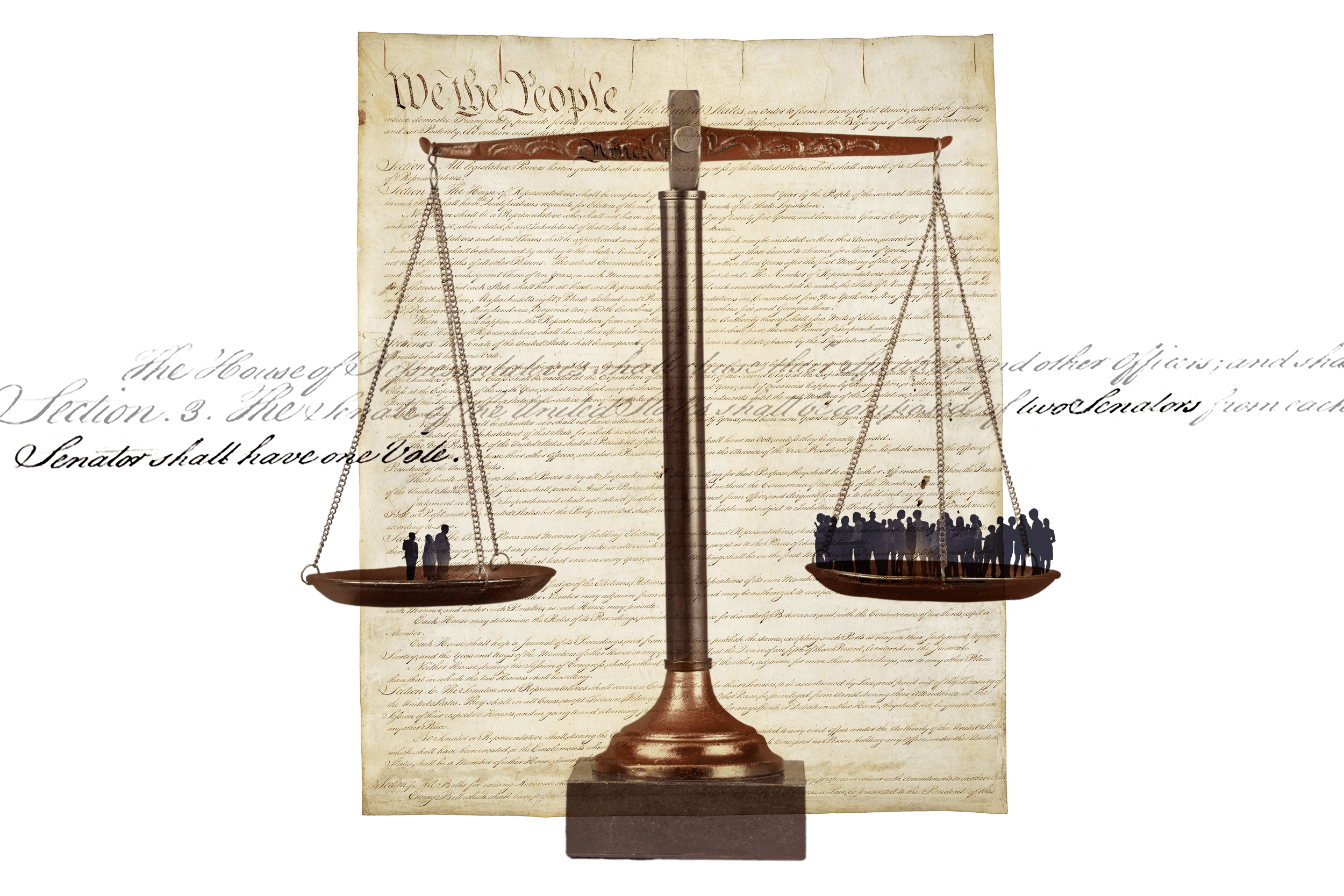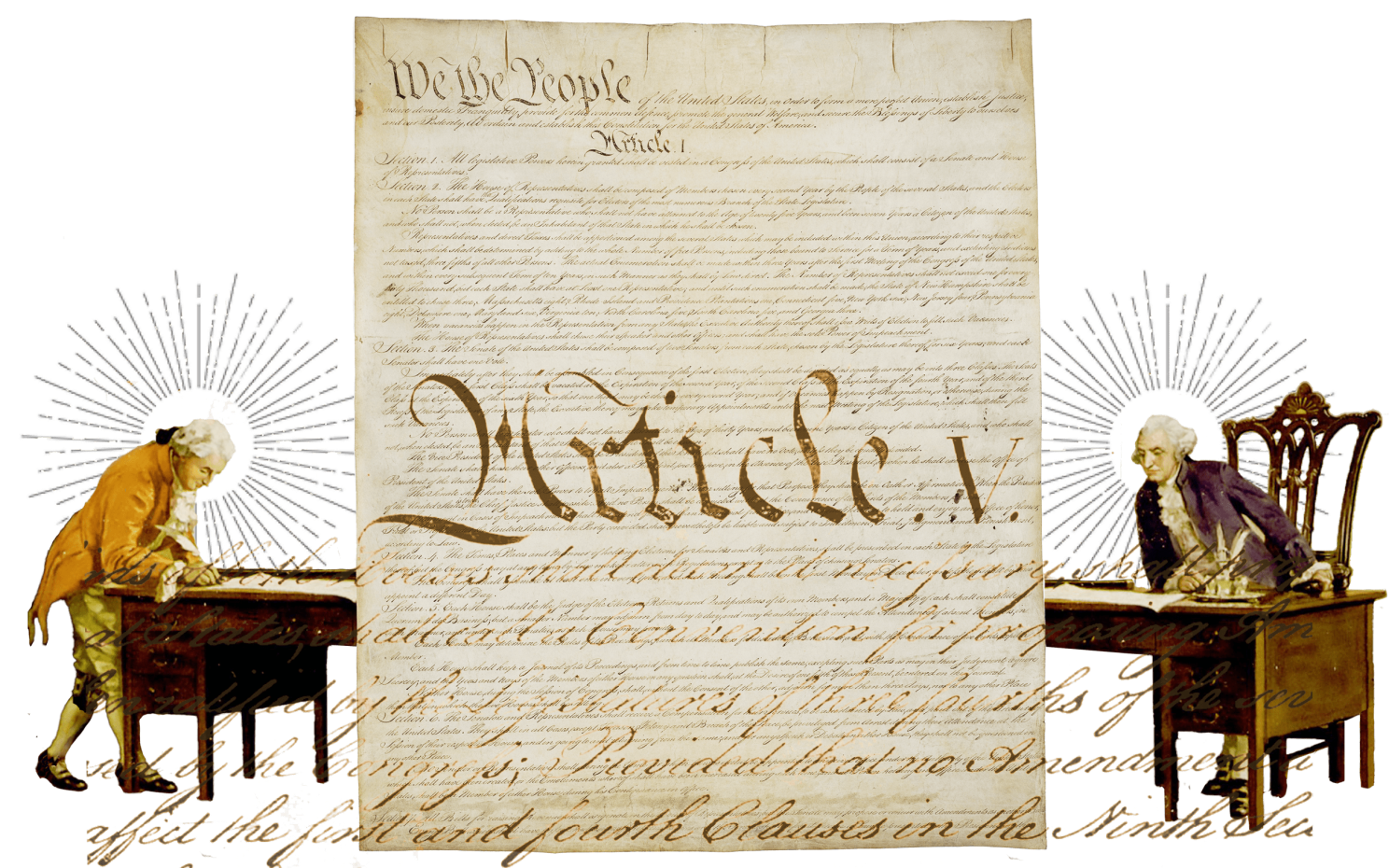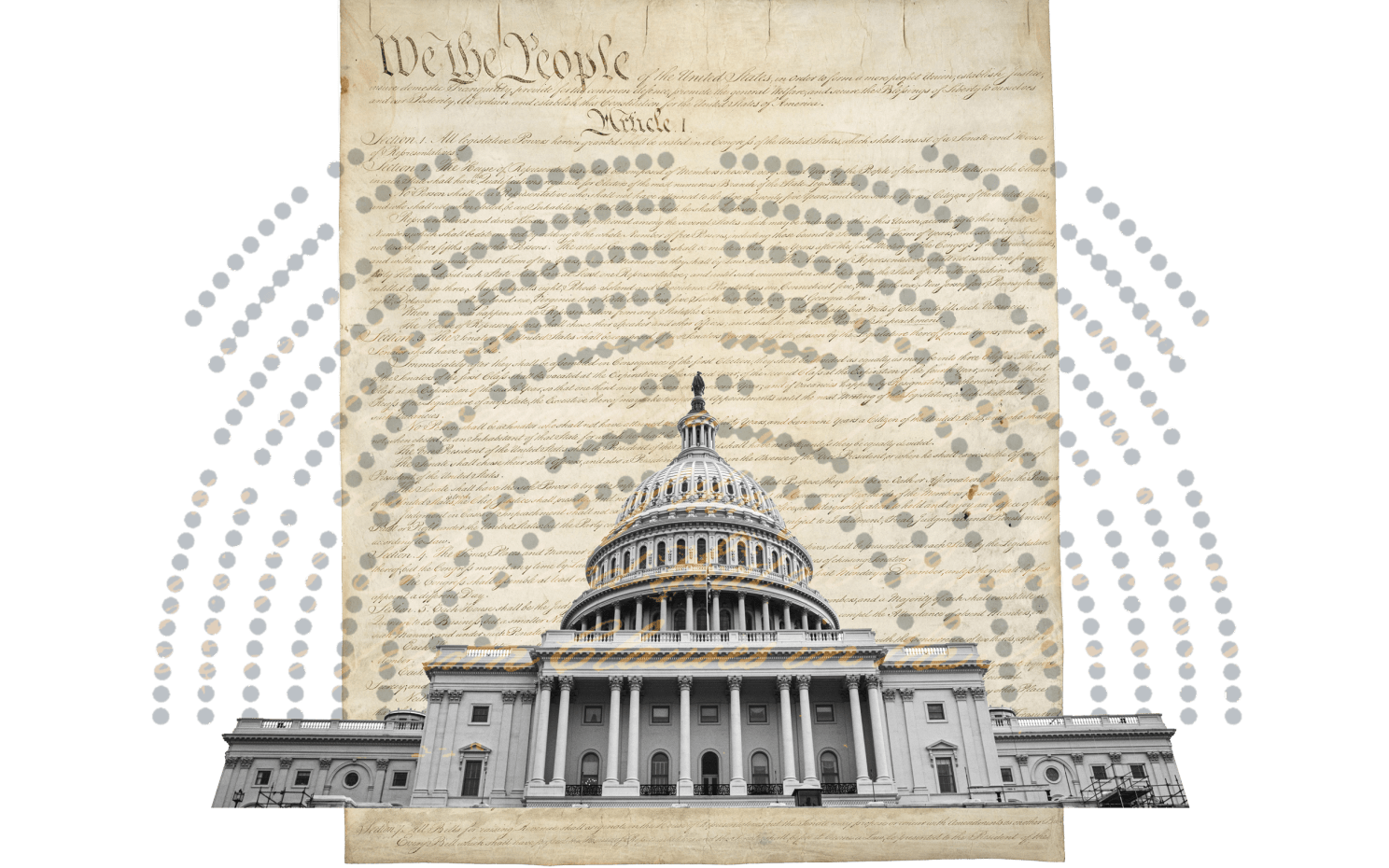Change the Senate

Illustration by Judy Blomquist/Harvard Staff
Disproportionate influence of smaller states creates ‘significant democratic deficit,’ Vicki Jackson argues
Part of the Fixing the Constitution series
Many analysts and citizens believe that the Constitution, more than 230 years old, is out of touch with contemporary America. We asked five scholars to isolate the problem they’d attack first.
Vicki Jackson is the Laurence H. Tribe Professor of Constitutional Law.
The requirement that each state have the same number of votes in the Senate gives unjustifiably disproportionate voting power to small minorities of the population. Wyoming, with a 2021 population of about 579,000, has the same two senators as California, with a 2021 population of about 39,238,000. The voting power of residents of Wyoming in the Senate is thus roughly 68 times greater than that of Californians.
While it is not uncommon that small subnational units in federal systems receive some extra voting power in the national legislature, this population ratio for states with equal voting power in the Senate is extraordinary, creating a significant democratic deficit. Senators from states with a substantial majority of the national population can be a minority in the Senate; in early 2017, for example, the 52 Republican Senators represented states with about 144 million Americans, while the 48 Democratic-caucusing Senators represented states with 178 million. The smaller- population states’ undue influence in the Senate affects everything from federal legislation (including spending, which skews to the smaller-population states) to presidential elections, where the total number of electoral votes by state is determined by the total number of members of Congress that each state has — senators and House members. The Senate’s composition also affects voting to confirm or reject nominees to federal judgeships or other important positions and voting on whether to ratify treaties.
“The degree of disproportion created by the rule of equal voting power for all states in the Senate … can no longer be justified by reference to the historical conditions of 1787.”
This highly disproportionate influence for the smaller-population states is inconsistent with basic understandings of equality. When the Supreme Court required state legislatures to reapportion both of their chambers in accordance with the principles of “one person, one vote,” requiring rough population equality of electoral districts, it viewed the U.S. Senate as a compromise that had been necessary to obtain agreement at the founding, not as a more general principle allowing states to depart from population-based districting. But we are more than 220 years past that founding and living under very different conditions. The degree of disproportion created by the rule of equal voting power for all states in the Senate — a degree of disproportion (between the largest and smallest states by population) that has grown substantially from the founding to the present — can no longer be justified by reference to the historical conditions of 1787.
Article V of the Constitution, which provides the rules for amendment, imposes special obstacles to changing that requirement of equal voting by states in the Senate. Article V requires (in the most widely used formula for amendment) that any amendment be proposed by two-thirds of both houses of Congress, and then be ratified by the legislatures of three-fourths of the states. This rigid amending formula is one of the most demanding in the world — and the U.S Constitution is one of the least often amended, raising problems of democratic theory in imputing consent by present generations to living under a constitution so difficult to change. But that problem is compounded dramatically for the Senate because Article V also provides that “no state, without its consent, shall be deprived of its equal suffrage in the Senate.” This means that any small state, for reasons only of self-interest, can defeat an amendment to revise the current equal allocation of senators by state that so affects the Senate’s many roles (including its effect on presidential electors, which Danielle Allen’s proposal to expand the House of Representative could help mitigate).
What to do — in modifying the structure and/or responsibilities of the Senate — and how to do it legally? Could creative negotiations secure agreement among all states to revise the allocation of Senate seats toward a less disproportional system? Could other possible changes — for example, in the Senate’s role in enacting laws, or in its other roles — avoid Article V’s special “equal suffrage” rule and secure two-thirds of votes in both houses and ratifications in three-fourth of the states? Analysis of these and other such questions is complex and for another day. But the democratic deficit of the Senate demands our urgent attention.
— As told to Christina Pazzanese/Harvard Staff Writer








